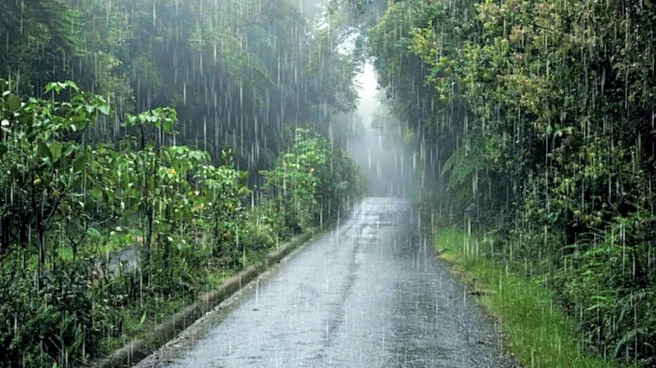What is the story about?

A
massive cloud of ash that erupted from Ethiopia's Hayli Gubbi volcano for the first time in nearly 12,000 years has now travelled and reached India, affecting Delhi, Rajasthan, and several parts of the north. According to news reports, the plume - travelling at nearly 100–120 km/hour at altitudes above 10 km, is packed with volcanic ash – along with sulphur dioxide, and small particles of glass and rock. With Delhi and the entire National Capital Region already battling deadly air pollution for more than a month and a half, this new development is being closely monitored by experts for health issues.
Skies darkened, flights cancelled
The Air Quality Index in many parts of Delhi has already spiked above 400, with a layer of smog settling over the city and nearby areas. Visibility dropped noticeably around Anand Vihar, AIIMS, and Safdarjung. And with this new development, warnings have been issued regarding the disruption of air traffic, which can also lead to delays and longer travel times. Because of the ash, multiple flights operated by domestic and international carriers have been diverted, while some have been cancelled altogether due to the hazardous conditions at higher altitudes. India’s Directorate General of Civil Aviation has issued an advisory instructing airlines to avoid ash-laden regions, reroute aircraft, and conduct thorough engine inspections. Volcanic ash poses severe risks to aircraft, including engine failure, abrasion of cockpit windows, and interference with navigation systems.How will the volcanic ash affect Delhi’s AQI?
According to the IndiaMetSky Weather meteorological service, the ash cloud’s altitude means that India’s surface-level AQI will not deteriorate much. It has reiterated that the event is "mostly safe" and said it would "not like to impact surface AQI levels as Ash clouds are in 25,000 to 45,000 feet above the surface." The agency clarified that the plume would drift over Delhi, Haryana, and Rajasthan, but the impact on the ground would be limited to darker skies and hazier conditions.Can volcanic ash be harmful to your health?
Inhaling the volcanic ash can be extremely harmful for your health, as according to doctors, it includes gases with high concentrations of chemicals as well. However, with the current altitude, the present condition with regard to pollution is not likely to make much of a difference. Experts believe that when mixed with already toxic Delhi air, health hazards can include mild symptoms of eye and throat irritation, along with a few severe symptoms such as difficulty breathing and aggravated allergies. Doctors say in a few rare circumstances, long-term exposure to fine volcanic ash may also lead to serious lung diseases, but for that, you need to be directly in the line of persistent ash clouds for prolonged periods. Also, for the diseases to occur, the ash has to be extremely fine, containing crystalline silica, and the people must be exposed to the ash in high concentrations over many years. Sulphur dioxide – one of the main gases that are included in the volcanic ash can otherwise lead to serious health effects, including respiratory irritation, asthma attacks, and lung damage. Its exposure also irritates the eyes, nose, throat, and lungs, leading to symptoms like coughing, wheezing, and shortness of breath, especially during physical activity. However, doctors say the exposure needs to be long-term.Precautionary measures to be taken
Since the air in Delhi-NCR is already a breathing hazard, for this additional issue, you can take the following precautions:- Wear an N95 mask when outdoors
- Wear sunglasses whenever out in the sun
- Practice breathing exercises
- Eat foods that are loaded with antioxidants to strengthen your immunity
- Wash your face and hands
- Avoid staying indoors if possible
/images/ppid_a911dc6a-image-17640448254938395.webp)



/images/ppid_a911dc6a-image-176404286710753090.webp)


/images/ppid_a911dc6a-image-176403763011891870.webp)



/images/ppid_a911dc6a-image-176394963911389919.webp)

